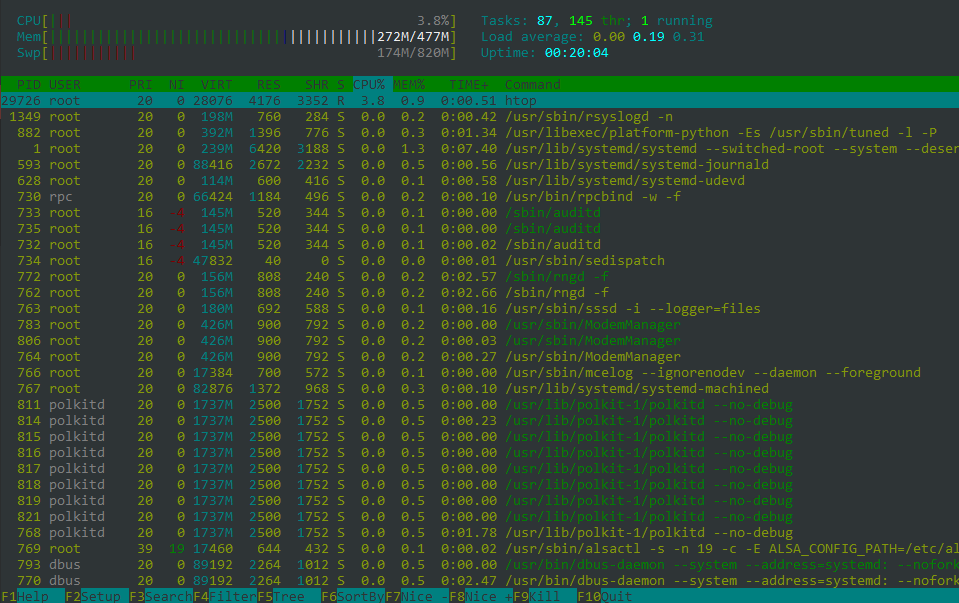


The bit of time a process runs is called the time slice. Then it is suspended while the other processes waiting to run take turns running for a while. How is that possible when a single CPU can only execute one instruction at a time? The answer is time-sharing. You can connect to your server via SSH and look at the output of htop while your web server delivers your blog's content to your readers over the internet. Linux is a multitasking operating system which means that even when you have a single CPU, you can run several processes simultaneously. t: the process is stopped by the debugger during the tracing.T: the process is stopped by the job control signal.Terminated but not repeated by its parent.


R: the process is currently running or on a run queue waiting to run.Here are the values you might encounter within it: While within htop it is denoted as only an “S”, it stands for process state. This command gets the information from the /etc/passwd and /etc/group files. The id command can be used to find out the name of the user. You can also use the f switch with ps or pstree. If you hit F5 in htop, you can see the process hierarchy. These relationships form a tree structure. The new process is now a child process for the parent process. When you launch a new process, the process that launches the new process is called the parent process. If you run a program in the background ( &) from bash, you will see the job number in square brackets and the PID. PID (Process ID)Įvery time a new process is started, it is assigned an identification number (ID) called process ID or PID for short. If you take another look at the strace output, you'll see that this file was also opened. They are taken from the /proc/loadavg file. In addition to uptime, three numbers represent the load average. It reads the information from the /proc/uptime file. The same information can be seen by running the uptime command. This parameter indicates how long the system has been running. Now, let’s see what each field means, starting at the top: Uptime Here’s what the htop interface looks like: First and foremost, you need to install htop on your system.


 0 kommentar(er)
0 kommentar(er)
